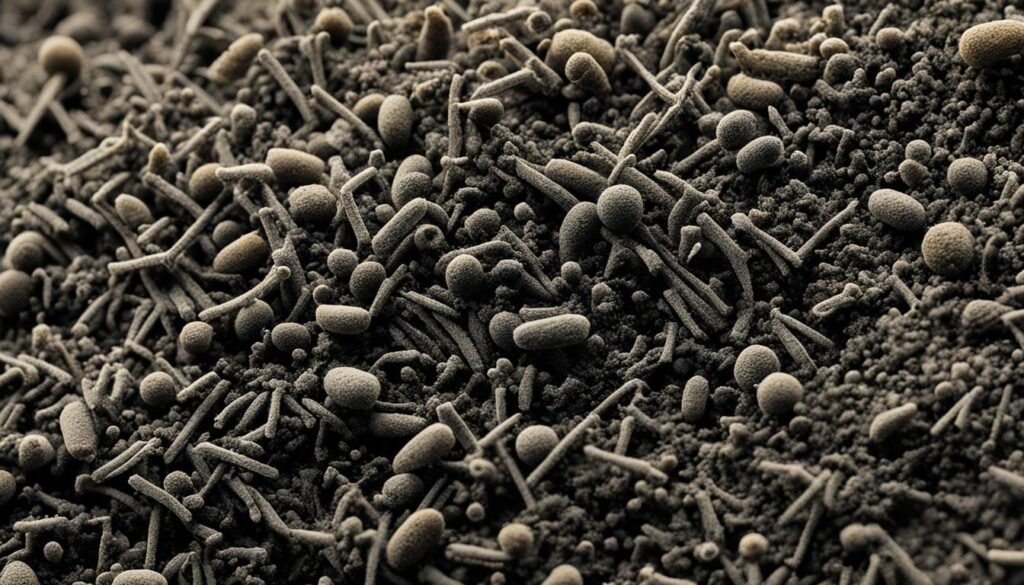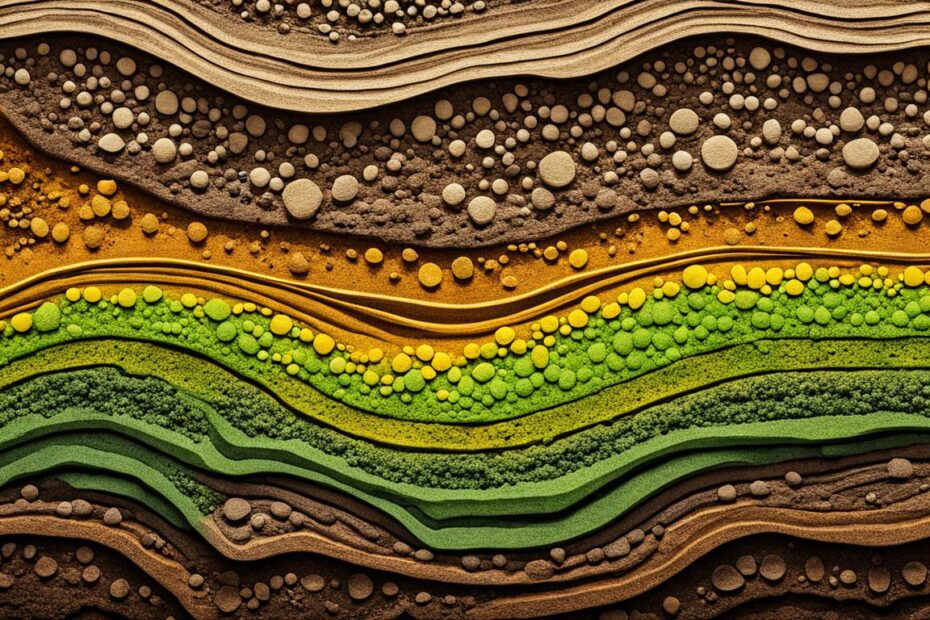In the captivating world of nanotechnology, researchers have uncovered a remarkable discovery – the potential of horse manure to serve as a valuable source for the creation of carbon nano-particles.
This innovative approach not only presents an opportunity to harness the abundant and often overlooked resource of equine waste but also holds the promise of revolutionizing the field of sustainable material development.
The ability to transform agricultural waste, such as horse manure, into high-value nanomaterials is a testament to the ingenuity of modern science.
By unlocking the inherent potential of these organic carbon sources, scientists are paving the way for a new era of environmentally friendly and cost-effective nanoparticle synthesis.
This groundbreaking development not only addresses the growing demand for innovative nanomaterials but also contributes to the broader goal of sustainable waste management and resource utilization.
Key Takeaways
- Horse manure can be utilized as a valuable source for the formation of carbon nano-particles, a game-changing discovery in nanotechnology.
- Transforming agricultural waste, such as equine waste, into high-value nanomaterials presents a sustainable and cost-effective approach to material development.
- The ability to harness the inherent potential of organic carbon sources, like horse manure, opens up new possibilities for innovative and environmentally friendly nanoparticle synthesis.
- This breakthrough in waste-to-value conversion contributes to the broader goal of sustainable resource utilization and waste management.
- The exploration of horse manure’s role in carbon nano-particle formation showcases the power of scientific innovation to address pressing environmental and material challenges.
Harnessing Nature’s Abundance
As the world grapples with the mounting challenges of waste management, researchers are turning their attention to an untapped resource that holds immense potential: agricultural waste. Among the diverse forms of biomass, one stands out as a particularly promising candidate – equine waste.
Unlocking the Potential of Agricultural Waste
Agricultural waste, often viewed as a nuisance, is now being recognized for its inherent value as a source of organic carbon.
By harnessing the power of agricultural waste utilization, scientists are developing innovative ways to convert this abundant resource into valuable carbon nano-particles, paving the way for a more sustainable future.
Equine Waste: An Overlooked Treasure Trove
One of the most overlooked forms of agricultural waste is equine waste. Horses, a ubiquitous presence in many parts of the world, produce a significant amount of manure that has traditionally been discarded or underutilized.
However, researchers are now recognizing the immense potential of equine waste as a rich source of organic carbon sources for the production of sustainable nanomaterials.
By harnessing the power of biomass conversion, scientists are transforming this often-neglected waste into a treasure trove of opportunities.
The journey towards a more sustainable future begins with our ability to see value where others see only waste, and the exploration of equine waste as a feedstock for carbon nano-particle synthesis is a testament to this shift in perspective.
The Nanotech Revolution
The field of nanotechnology has revolutionized modern science, opening doors to groundbreaking advancements across various domains.
At the heart of this revolution are carbon nanostructures, diminutive yet powerful building blocks that are transforming materials science, energy storage, and environmental remediation. The synthesis of these nanoparticles has become a pivotal focus in the world of sustainable nanomaterials.
Nanotechnology: A Game-Changer in Modern Science
Nanotechnology, the manipulation and engineering of materials at the nanoscale, has ushered in a new era of scientific discovery.
The unique properties of carbon nanostructures, such as their high surface area, exceptional strength, and exceptional electrical and thermal conductivity, have opened up a vast array of applications.
From advanced composites to energy-efficient devices, the impact of this technology is felt across industries, redefining the way we approach modern challenges.
The development of innovative nanoparticle synthesis techniques has been a critical driver of this technological revolution. Researchers are exploring diverse methods, including the utilization of agricultural waste, to produce high-quality carbon nanostructures in a sustainable and cost-effective manner.
This shift towards eco-friendly nanomaterial production is paving the way for a greener future, where waste can be transformed into valuable resources.
As the nanotech revolution continues to gain momentum, the potential applications of carbon nanoparticles are boundless. From improving energy storage capacity to enhancing water filtration systems, these remarkable materials are poised to reshape the landscape of modern science and technology.
The future holds immense promise, and the world eagerly awaits the next groundbreaking innovations that will emerge from this transformative field.
Exploring the Role of Horse Manure in Carbon Nano-Particle Formation
As the world continues to seek innovative solutions for sustainable material development, researchers have turned their attention to an unexpected source: horse manure.
This equine waste, long considered an agricultural byproduct, is now emerging as a promising raw material for the synthesis of carbon nano-particles, a class of advanced materials with remarkable properties and diverse applications.
The unique composition of horse manure, rich in organic carbon, makes it an intriguing candidate for nanoparticle synthesis. Equine waste contains a complex blend of cellulose, hemicellulose, and lignin, which can be efficiently converted into high-quality carbon precursors through carefully controlled thermal and chemical processes.
Researchers have discovered that the carbonization of horse manure can yield a diverse array of carbon nano-structures, including nanoparticles, nanotubes, and nano-sheets.
These nano-materials exhibit exceptional physical, chemical, and electrical characteristics, making them valuable for applications in fields such as energy storage, catalysis, and advanced composites.
Moreover, the abundance and accessibility of horse manure as a raw material offer significant advantages. Unlike synthetic precursors, which can be energy-intensive and costly to produce, horse manure is a readily available, renewable, and cost-effective source of organic carbon.
This presents an opportunity to develop sustainable and scalable nanoparticle synthesis processes, aligning with the growing global demand for environmentally-friendly materials and technologies.

As the exploration of horse manure’s potential in carbon nano-particle formation continues, researchers are uncovering new insights into the complex interplay between the composition of equine waste and the formation of diverse nano-structures.
This exciting field of study holds the promise of unlocking a treasure trove of sustainable material innovations, transforming a once-overlooked agricultural byproduct into a valuable resource for the nanotech revolution.
Organic Carbon Sources for Nanoparticle Synthesis
In the pursuit of sustainable nanomaterials, researchers are increasingly turning to organic carbon sources as the foundation for nanoparticle synthesis. These renewable and abundant resources, such as agricultural waste, offer a promising pathway to transform waste into valuable nanomaterials.
Biomass Conversion: Turning Waste into Wealth
The process of biomass conversion plays a crucial role in this endeavor. By harnessing the inherent properties of organic matter, researchers can unlock the potential of agricultural waste, such as horse manure, to synthesize a diverse range of carbon nanoparticles.
This innovative approach not only reduces the environmental impact of waste disposal but also paves the way for the creation of sustainable nanomaterials with a wide array of applications.
| Organic Carbon Source | Nanoparticle Synthesis | Applications |
|---|---|---|
| Horse Manure | Carbon Nanoparticles | Energy Storage, Catalysis, Biomedical |
| Corn Stover | Cellulose Nanocrystals | Reinforced Composites, Filtration, Packaging |
| Bamboo Biomass | Activated Carbon Nanoparticles | Adsorption, Water Purification, Supercapacitors |
By harnessing the wealth of organic carbon sources available in nature, researchers are unlocking new frontiers in the synthesis of sustainable nanomaterials.
This approach not only addresses the growing demand for innovative materials but also contributes to the circular economy by transforming waste into a valuable resource.
Sustainable Nanomaterials from Agricultural Waste
In the quest for eco-friendly solutions, researchers have turned their attention to the untapped potential of agricultural waste as a source of sustainable nanomaterials. Among the most promising raw materials is horse manure, a readily available and often overlooked byproduct of the equine industry.
The production of carbon-based nanoparticles from horse manure has garnered significant interest in the scientific community. These nanomaterials, derived from the organic matter and carbon-rich compounds present in equine waste, hold immense promise for a variety of environmental applications.
| Sustainable Nanomaterials | Agricultural Waste Utilization | Carbon Nanostructures | Environmental Applications |
|---|---|---|---|
| Carbon quantum dots | Conversion of horse manure | Graphene-like structures | Water purification |
| Biochar-based nanoparticles | Pyrolysis of agricultural waste | Porous carbon nanostructures | Soil remediation |
| Nanocomposites with natural fibers | Valorization of waste biomass | Multifunctional carbon nanomaterials | Catalytic applications |
These sustainable nanomaterials possess unique properties, such as high surface area, superior adsorption capacity, and excellent electrochemical performance, making them ideal for environmental applications, including water purification, soil remediation, and catalytic processes.
By harnessing the power of agricultural waste, researchers are paving the way for a more sustainable future, where waste is transformed into valuable resources.
The development of these carbon-based nanomaterials from horse manure and other agricultural waste not only addresses environmental concerns but also contributes to the circular economy, where waste is repurposed and reused, minimizing the strain on natural resources. This innovative approach holds immense potential for a more sustainable and eco-friendly future.
Carbon Nanostructures: Properties and Applications
The field of carbon nanostructures has seen remarkable advancements in recent years, unveiling the vast potential of these versatile materials.
From energy storage to water purification, the unique properties of carbon nanoparticles have revolutionized numerous industries, making them an indispensable part of the sustainable nanomaterials landscape.
Exploring the Versatility of Carbon Nanoparticles
Carbon nanostructures, such as fullerenes, carbon nanotubes, and graphene, possess exceptional physical, chemical, and electrical characteristics.
Their high surface area, remarkable strength, and excellent conductivity make them ideal candidates for a wide range of applications. These nanoparticles have found their way into cutting-edge technologies, transforming fields like energy storage, catalysis, and environmental remediation.
| Property | Significance |
|---|---|
| High Surface Area | Enables efficient adsorption and catalytic activities |
| Electrical Conductivity | Facilitates charge transport in energy storage devices and electronic components |
| Mechanical Strength | Reinforces materials, leading to improved structural integrity |
| Chemical Stability | Allows for robust and long-lasting performance in various environments |
The versatility of carbon nanostructures has opened up a world of possibilities, transforming industries and paving the way for innovative solutions to global challenges.
As the field of sustainable nanomaterials continues to evolve, the potential applications of these remarkable nanoparticles remain vast and exciting.

Environmental Applications of Carbon Nanoparticles
The versatility of carbon nanostructures extends far beyond their technological applications. These sustainable nanomaterials, derived from agricultural waste, are now finding their way into innovative environmental solutions.
From water treatment to air purification, the potential of carbon nanoparticles is steadily being unlocked, paving the way for a greener future.
One of the most promising environmental applications of carbon nanostructures is water treatment. These nanomaterials can effectively remove a wide range of contaminants, including heavy metals, organic pollutants, and even harmful pathogens, from water sources.
Their large surface area and adsorptive properties make them highly efficient in water purification, contributing to the development of more sustainable and cost-effective water management systems.
In the realm of air quality, carbon nanoparticles are proving to be invaluable. These nanomaterials can be incorporated into air filters and purifiers, trapping airborne particulates, toxic gases, and even odors. By leveraging the unique properties of carbon nanostructures, engineers are designing innovative solutions to combat air pollution, improving the overall environmental and human health.
Beyond water and air, carbon nanoparticles derived from agricultural waste are also finding applications in soil remediation.
These nanomaterials can be used to immobilize and neutralize soil contaminants, restoring the health and productivity of degraded lands. This approach not only addresses environmental concerns but also contributes to the sustainable utilization of agricultural waste.
As the world continues to grapple with pressing environmental challenges, the role of carbon nanostructures in developing innovative and sustainable solutions becomes increasingly crucial. By harnessing the power of these nanomaterials, we can work towards a future where environmental preservation and economic prosperity go hand in hand.
Innovative Approaches to Waste Utilization
In the quest to create a more sustainable future, researchers are exploring innovative ways to maximize the utilization of agricultural waste, including horse manure, for the production of carbon nano-particles and other valuable materials.
This approach not only reduces the environmental impact of waste disposal but also unlocks new opportunities for the circular economy.
Closing the Loop: Sustainable Waste Management
The concept of “closing the loop” in waste management is gaining traction, where waste is transformed into valuable resources that can be reused or repurposed.
Through advancements in biomass conversion and sustainable nanomaterials production, researchers are finding ways to convert agricultural waste utilization into high-value products, contributing to a more eco-friendly and resource-efficient future.
One such innovative approach involves the use of horse manure as a feedstock for the synthesis of carbon nano-particles.
By harnessing the inherent environmental applications of these nano-sized materials, scientists are developing cutting-edge solutions that can address a wide range of challenges, from energy storage to water purification.
| Process | Advantages | Applications |
|---|---|---|
| Biomass conversion of agricultural waste | Reduced waste disposal, resource recovery, circular economy | Sustainable nanomaterials, energy storage, environmental remediation |
| Carbon nanoparticle synthesis from horse manure | Waste valorization, eco-friendly production, versatile properties | Catalysis, sensing, water treatment, energy devices |
By embracing these innovative approaches to waste utilization, researchers are not only tackling the challenge of environmental sustainability but also unlocking new opportunities for the development of cutting-edge technologies and the transition towards a more circular economy.
Challenges and Future Perspectives
As the research into sustainable nanomaterials derived from agricultural waste, such as horse manure, continues to evolve, there are several challenges and future perspectives to consider.
The production of carbon nanoparticles from these organic sources holds immense promise, but overcoming technical, economic, and regulatory hurdles is crucial for realizing its full potential.
One of the key challenges lies in optimizing the nanoparticle synthesis process. Researchers must fine-tune the parameters, such as temperature, pH, and reaction time, to consistently produce nanoparticles with the desired size, shape, and properties.
Achieving scalable and cost-effective synthesis methods is essential for transitioning this technology from the lab to industrial-scale applications.
Furthermore, the environmental applications of these carbon nanoparticles, particularly in areas like water treatment and soil remediation, require extensive testing and regulatory approval.
Ensuring the safety and sustainability of these nanomaterials is paramount, as their interactions with living organisms and the ecosystem must be thoroughly understood.
| Challenge | Potential Solution |
|---|---|
| Optimizing nanoparticle synthesis | Continued research and development to refine process parameters |
| Ensuring scalability and cost-effectiveness | Exploring innovative manufacturing techniques and leveraging agricultural waste |
| Regulatory approval for environmental applications | Rigorous testing and collaboration with regulatory bodies |
Despite these challenges, the future of sustainable nanomaterials derived from agricultural waste holds immense promise. As researchers and industries continue to push the boundaries of nanoparticle synthesis and explore innovative applications, the potential to transform waste into valuable resources becomes increasingly tangible.
By overcoming these obstacles, we can unlock the full potential of this transformative technology and contribute to a more sustainable future.
Conclusion
In the realm of sustainable materials development and environmental applications, the remarkable potential of horse manure as a source of organic carbon for the synthesis of carbon nano-particles has been unveiled.
By harnessing the abundance of this agricultural waste, researchers are unlocking new frontiers that hold immense promise for a more eco-friendly and resource-efficient future.
The nanotech revolution continues to gain momentum, and the utilization of horse manure and other organic waste streams is at the forefront of this transformative journey.
Through innovative approaches to waste utilization, the convergence of Exploring the Role of Horse Manure in Carbon Nano-Particle Formation, sustainable nanomaterials, and environmental applications has the power to redefine how we perceive and manage agricultural waste utilization.
As we look ahead, the insights gained from this exploration of horse manure’s role in carbon nano-particle formation serve as a testament to the ingenuity of the human spirit.
By embracing the abundance of nature and the untapped potential of agricultural waste, we are poised to unlock a future where sustainable materials and environmental responsibility go hand in hand, paving the way for a more harmonious coexistence between humanity and the natural world.
FAQ
What is the role of horse manure in the formation of carbon nano-particles?
Researchers have discovered that horse manure, an abundant and often overlooked agricultural waste, can be a valuable source of organic carbon for the synthesis of carbon nano-particles. The unique composition and properties of equine waste make it a promising material for the production of these advanced nanomaterials.
How can agricultural waste, such as horse manure, be utilized for sustainable nanomaterial development?
By recognizing the inherent value in agricultural waste, scientists are developing innovative ways to convert biomass like horse manure into valuable carbon nano-particles.
This process of biomass conversion enables the transformation of waste materials into sustainable nanomaterials with a wide range of applications.
What are the key properties and applications of carbon nano-particles?
Carbon nano-particles possess unique properties, such as high surface area, excellent electrical conductivity, and remarkable mechanical strength. These versatile nanostructures have a wide range of applications, including energy storage, water purification, air filtration, and environmental remediation.
How can the utilization of agricultural waste, including horse manure, contribute to a more sustainable future?
The development of carbon nano-particles from agricultural waste, such as horse manure, aligns with the principles of a circular economy. By transforming waste into valuable resources, this process helps to close the loop in waste management, reducing environmental impact and promoting sustainable practices.
What are some of the challenges and future perspectives in the field of carbon nano-particle production from agricultural waste?
While the potential of using horse manure and other agricultural waste for carbon nano-particle synthesis is promising, there are still technical, economic, and regulatory hurdles that researchers and industries must overcome.
Continued innovation and collaboration will be crucial in addressing these challenges and realizing the full potential of this transformative technology.

